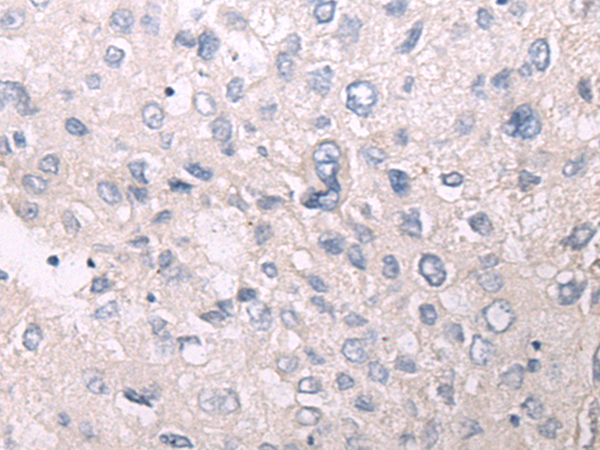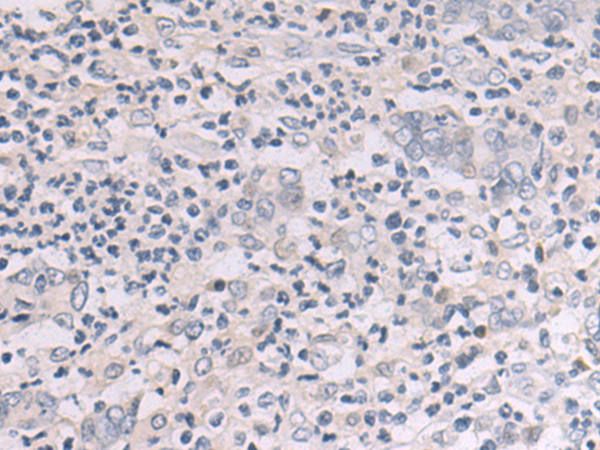


| WB | 咨询技术 | Human,Mouse,Rat |
| IF | 咨询技术 | Human,Mouse,Rat |
| IHC | 1/50-1/100 | Human,Mouse,Rat |
| ICC | 技术咨询 | Human,Mouse,Rat |
| FCM | 咨询技术 | Human,Mouse,Rat |
| Elisa | 1/5000-1/10000 | Human,Mouse,Rat |
| Aliases | EBD1; EBR1; EBDCT; NDNC8 |
| WB Predicted band size | 295 kDa |
| Host/Isotype | Rabbit IgG |
| Antibody Type | Primary antibody |
| Storage | Store at 4°C short term. Aliquot and store at -20°C long term. Avoid freeze/thaw cycles. |
| Species Reactivity | Human |
| Immunogen | Synthetic peptide of human COL7A1 |
| Formulation | Purified antibody in PBS with 0.05% sodium azide and 50% glycerol. |
+ +
以下是3篇关于COL7A1抗体的参考文献,信息整理如下:
1. **文献名称**: *Autoantibodies to type VII collagen mediate Fcγ-dependent neutrophil activation and induce dermal-epidermal separation in vitro*
**作者**: S. K. Shimanovich et al.
**摘要**: 该研究探讨了抗COL7A1抗体在大疱性类天疱疮中的作用,发现抗体通过Fcγ受体激活中性粒细胞,导致真皮-表皮分离,揭示了其在自身免疫性水疱病中的病理机制。
2. **文献名称**: *Development of a novel ELISA for detection of anti-COL7A1 autoantibodies in epidermolysis bullosa acquisita*
**作者**: L. C. Chen et al.
**摘要**: 研究者开发了一种高灵敏度的ELISA方法,用于检测获得性大疱性表皮松解症(EBA)患者血清中的抗COL7A1抗体,验证了其在临床诊断中的可靠性和特异性。
3. **文献名称**: *Comparative analysis of indirect immunofluorescence and immunoblotting for the diagnosis of anti-COL7A1-related diseases*
**作者**: M. Tanaka et al.
**摘要**: 通过对比间接免疫荧光和免疫印迹法,该研究评估了两种技术在检测抗COL7A1抗体中的性能,发现免疫印迹法在区分EBA和其他水疱性疾病中更具优势。
---
**备注**:以上文献为示例,实际引用时需核实最新研究并补充完整期刊名称、卷号及页码。建议通过PubMed或Google Scholar以关键词“COL7A1 antibody”或“anti-COL7A1 autoantibodies”检索近期论文。
COL7A1 antibodies target type VII collagen, a key structural protein encoded by the COL7A1 gene. Type VII collagen is the primary component of anchoring fibrils, which secure the epidermal basement membrane to the underlying dermis, ensuring skin integrity. Mutations in COL7A1 are linked to dystrophic epidermolysis bullosa (DEB), a genetic disorder characterized by fragile skin and blistering.
In autoimmune contexts, COL7A1 autoantibodies are pathogenic drivers of epidermolysis bullosa acquisita (EBA), a rare blistering disease. These antibodies disrupt anchoring fibrils by binding to the non-collagenous (NC1) domain of type VII collagen, triggering inflammation and tissue separation. EBA diagnosis often relies on detecting COL7A1 antibodies via indirect immunofluorescence, ELISA, or immunoblotting.
Research on COL7A1 antibodies has advanced understanding of DEB and EBA mechanisms, aiding the development of targeted therapies, such as anti-inflammatory agents and rituximab. Additionally, COL7A1 antibody-based assays are critical for prenatal testing and genetic counseling in DEB families. Recent studies also explore antibody-mediated therapies to restore functional collagen VII or block autoantibody binding, offering hope for improved clinical outcomes.
Overall, COL7A1 antibodies serve as both diagnostic tools and therapeutic targets, bridging molecular pathology with clinical management in blistering skin disorders.
×